
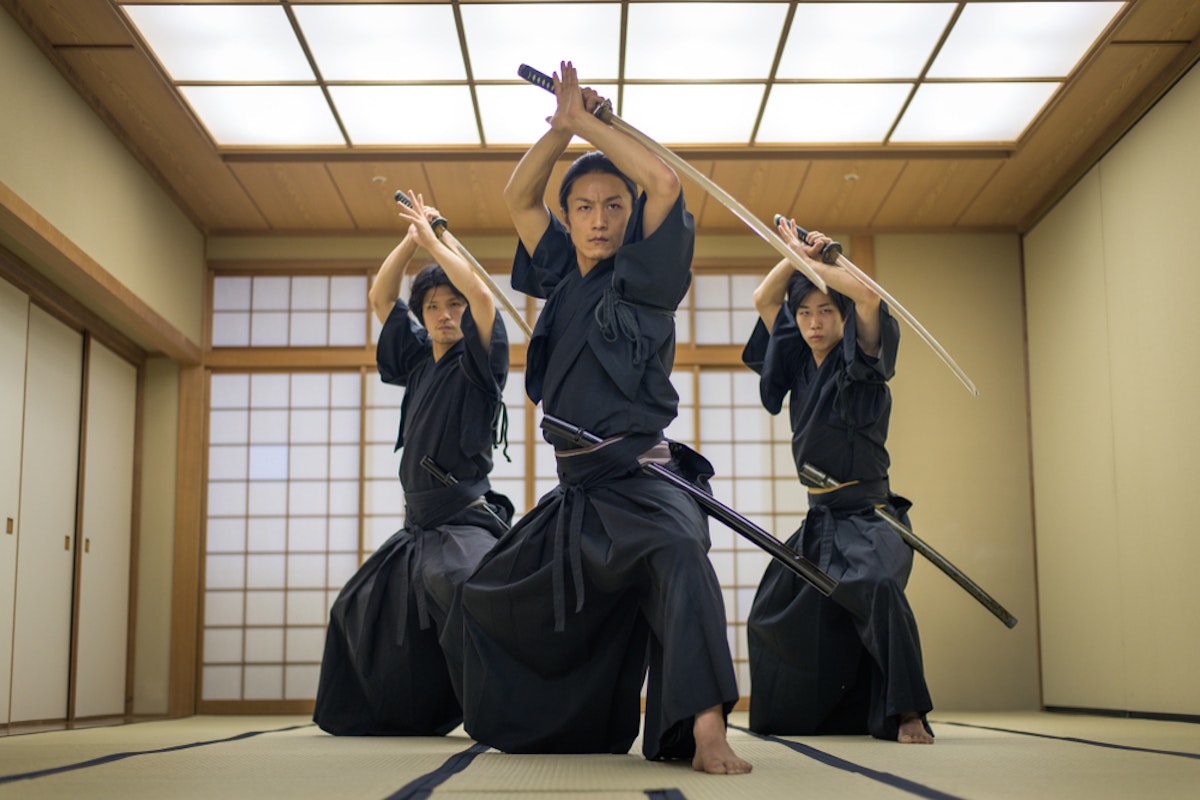
시간을 초월한 매혹적인 여정을 통해 일본의 고대 무술의 풍부한 태피스트리로 깊이 빠져들어 보세요. 전통으로 가득한 이 땅에서 일본의 수세기 고전적인 전투 기술과 그에 수반되는 깊은 철학의 비밀을 여는 열쇠를 발견할 수 있습니다. 검의 우아한 춤부터 그라플링의 예술적 섬세함, 그리고 명상적인 궁술의 길까지, 일본 무술의 세계는 그 깊은 지혜와 신체적 능력을 발견하고자 하는 이들을 기다리고 있습니다.
훈련, 존중, 그리고 자기 마스터리가 얽혀 있는 세계에 발을 내딛어 보세요. 일본 무술, 즉 '부도'는 단순한 전투 시스템이 아닙니다; 이는 이 매혹적인 나라의 문화적 직물에 깊게 뿌리내리고 있습니다. 켄쥬츠와 겐도, 검 싸움의 경이와 힘을 결합한 스타일; 주주츠와 유도, 제어와 기술을 강조하는 그라플링의 예술; 그리고 고대의 관습인 젠 궁술의 길을 탐험하면서 함께하세요.
그 과정에서 우리는 이러한 예술이 형성된 중요한 장소들, 현대 일본에 미친 영향, 그리고 여행자로서 이 수세기 전통의 일원이 되는 방법을 uncover 할 것입니다. 그러니, 여러분의 오비를 조이고 정신을 준비하세요. 일본의 고대 무술의 매혹적인 길을 여행하며 시작해 보세요.다양한 무술 탐험이미지 출처:
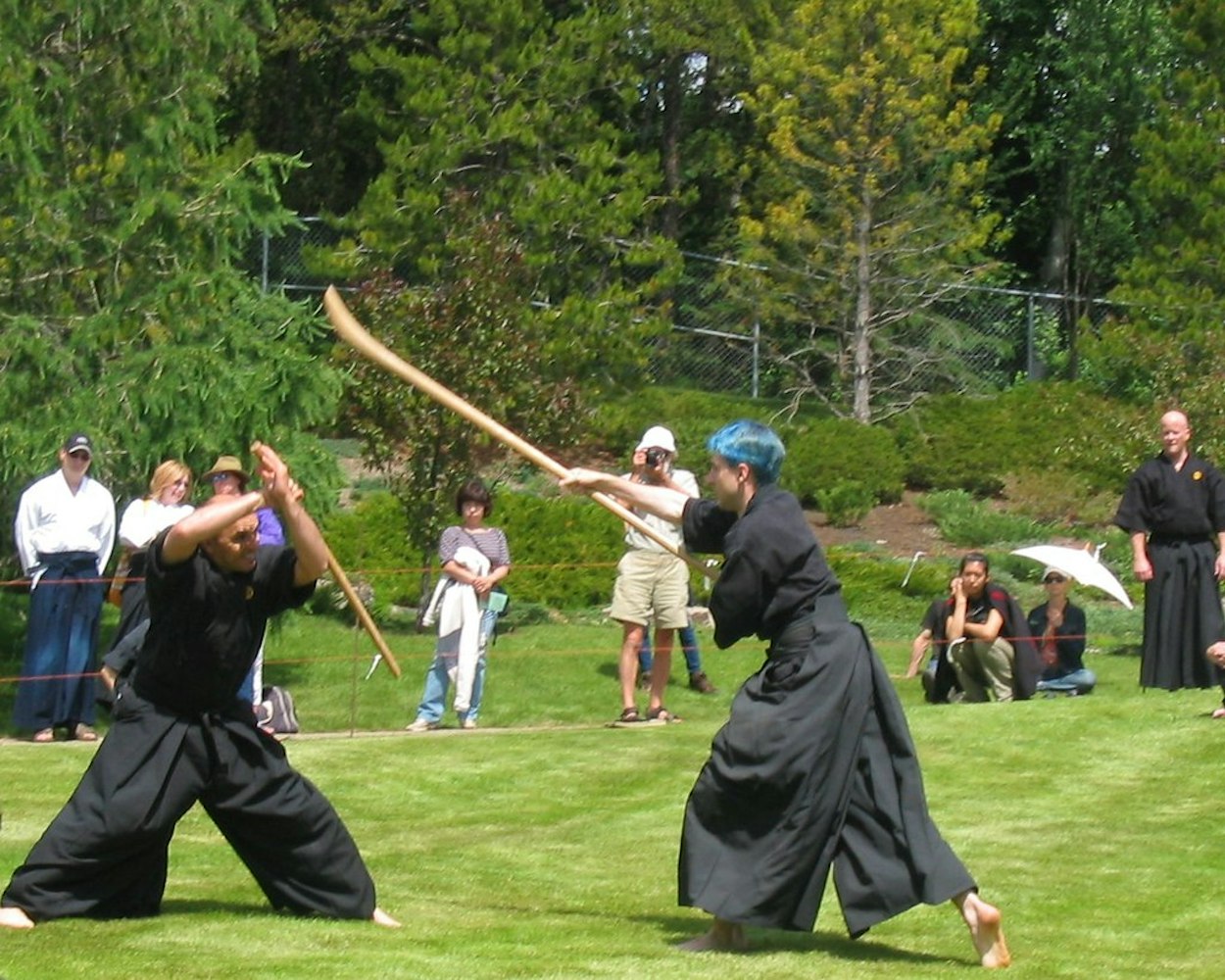
1. 검 싸움: 켄쥬츠와 겐도일본의 무술 세계에서 검 싸움의 기술은 특별한 위치를 차지합니다. 켄쥬츠, 즉
는 수행자와 그들의 무기, 그리고 훈련과 명예의 원칙 사이의 깊은 연결을 포함합니다. 봉건 일본 시대에 개발된 켄쥬츠는 사무라이 전사에게 필수적인 기술로, 수년의 헌신적인 훈련과 전략에 대한 깊은 이해를 요구했습니다.오늘날, 현대화된 형태의 검술인 겐도는 켄쥬츠의 유산을 이어갑니다. 수행자들은 보호구를 착용하고 신나이(대나무 검)를 휘둘르며 활기찬 결투에 참여합니다. 겐도는 신체적 숙련도뿐만 아니라 존중, 진실성, 그리고 자기개선을 촉진하는 정신적 강인함을 기릅니다. 2. 그라플링의 예술: 주주츠와 유도
검이 사무라이의 정신을 상징할 수 있지만, 일본 무술의 또 다른 면은 그라플링 기술의 예술적 섬세함을 탐구합니다. 주주츠는 수세기 동안의 훈련으로, 상대의 에너지와 모멘텀을 사용하는 것을 중심으로 동작하며, 관절 잠금, 던지기 및 상대를 제압하기 위해 고정하는 기술들을 사용합니다. 이는 현대 무술, 즉 유도로 이어지는 헌신적인 예술입니다.
Joshua Jamias
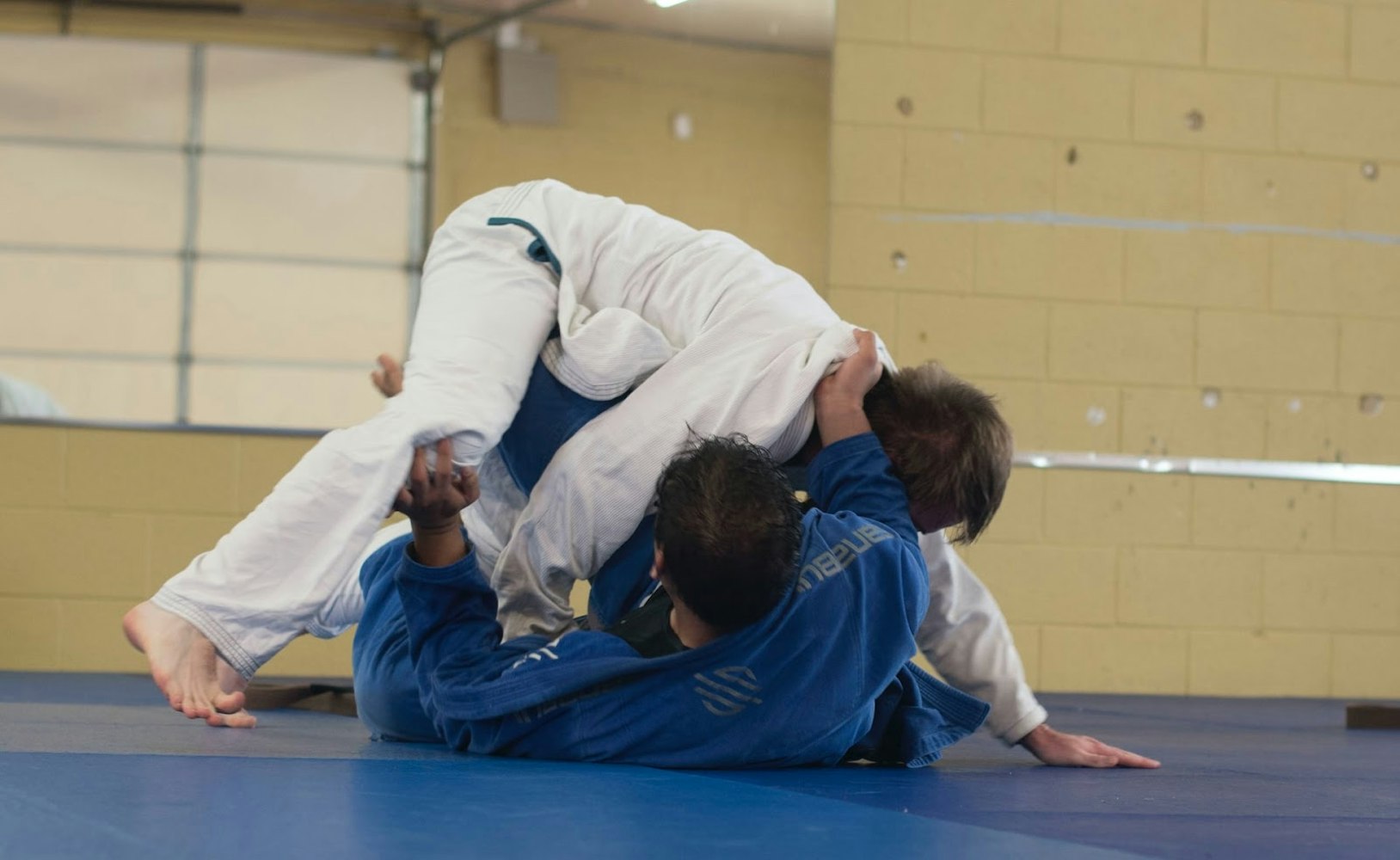
유도는 '부드러운 길'이라는 뜻으로, 19세기 후반 지고로 카노에 의해 개발되었습니다. 기술, 균형, 그리고 지렛대를 강조하는 유도는 숙련된 실행을 통해 신체적으로 더 크고 강한 상대를 극복하는 방법을 제공합니다.유도의 올림픽 경기 통합은 그 인지도를 더욱 높여, 세계에서 가장 잘 알려진 고전적인 무술 중 하나가 되었습니다. 역동적인 던지기를 하는 매트에서부터 기술의 존중하는 교환을 하는 것까지, 주주츠와 유도는 적응력, 전략, 그리고 마스터리 추구의 본질을 exemplify 합니다.
3. 젠 궁술: 규도
규도, '활의 길'은 스포츠의 영역을 초월하여 명상적인 실천이 됩니다. 선 불교에 뿌리를 두고 있는 규도는 목표를 맞추는 것만이 아니라 마음, 몸, 그리고 정신을 조화롭게 하는 것입니다. 수행자는 활과 화살을 자신을 extension으로 접근하여, 각 주의 깊게 실행된 샷을 통해 젠 상태를 달성하려고 합니다.
Wikimedia

코도칸: 유도가 시작된 곳
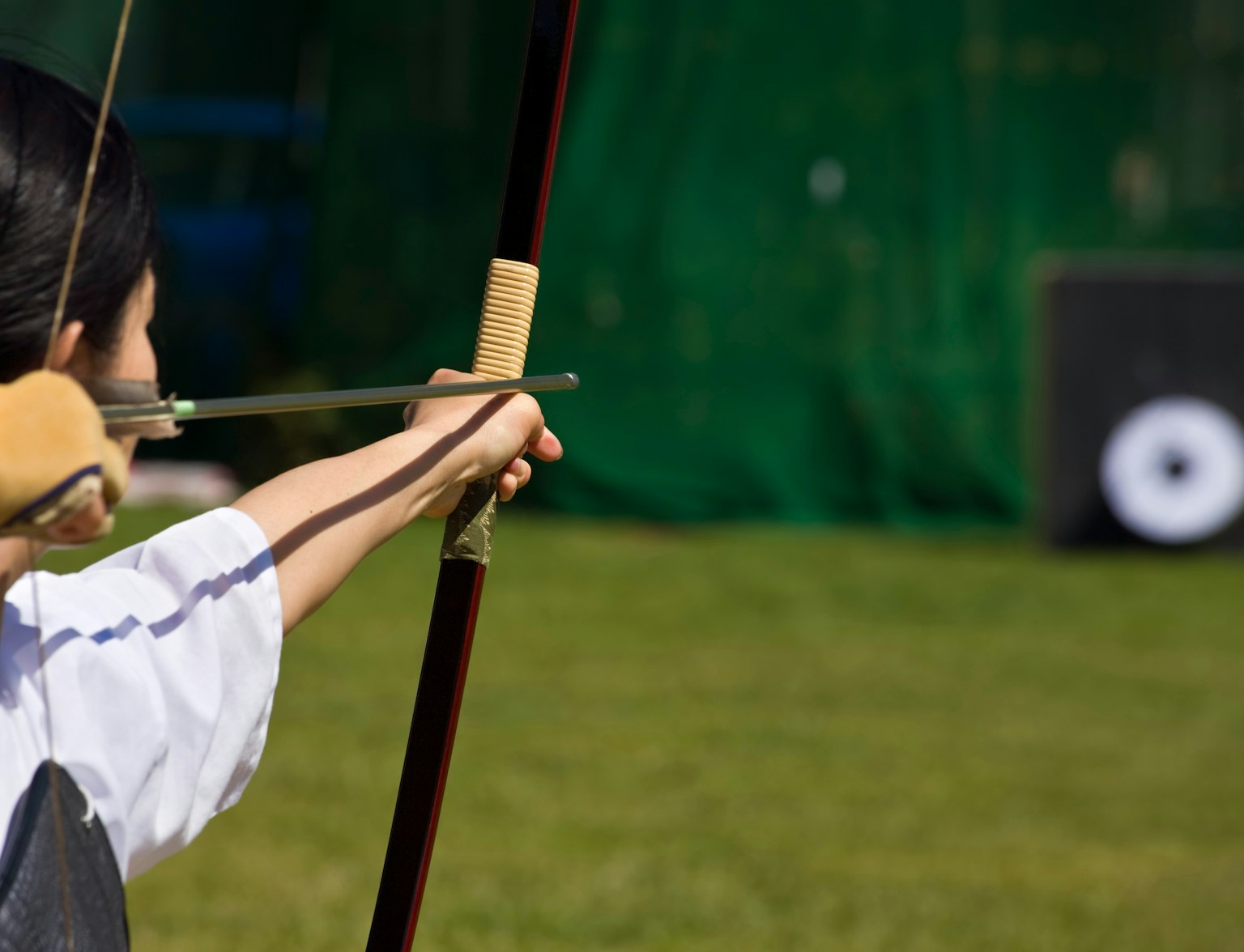
히로시마에서 일본 활쏘기인 규도(Kyudo)의 우아한 세계를 탐험해 보세요.
코도칸, 즉 유도의 세계에서 막대한 의미를 지닌 장소가 있습니다. 유도의 창시자 지고로 카노에 의해 1882년에 설립된 코도칸은 이 무술의 탄생지이자 중심지입니다. 이는 수많은 수행자들의 훈련 기지 역할을 하여 유도를 세계적인 현상으로 발전시켰습니다.이미지 출처: Uriel Soberanes
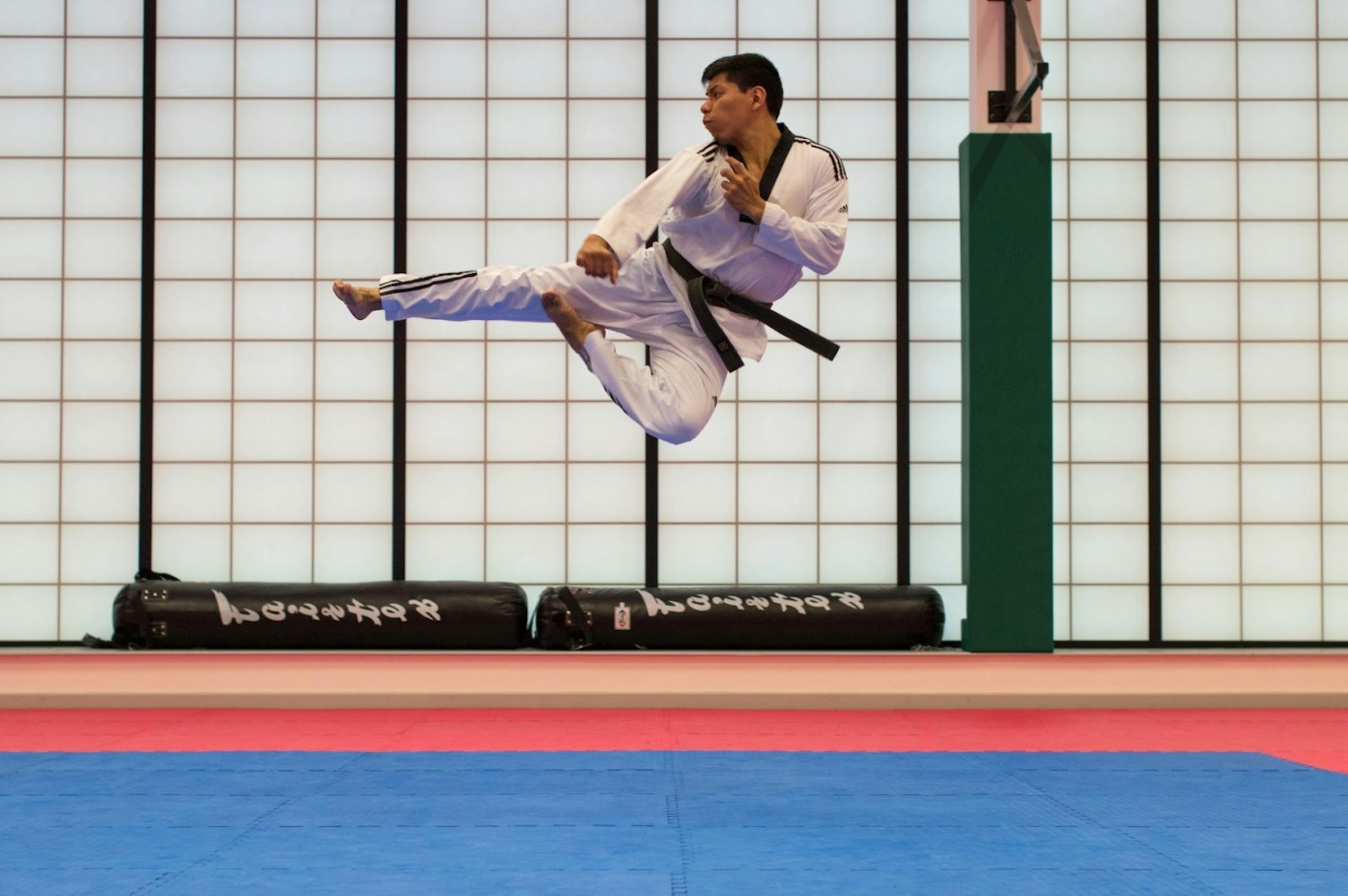
겐도의 세계를 탐색하고자 하는 이들에게 노마 도장은 이 전통 일본 무술의 탐구에 중요한 목적지입니다. 일본의 고대 수도인
노마 도장은 단순한 훈련 센터가 아니라 Kendo에 대한 지식과 전문성의 저장소로, Kendo에 대한 이해를 깊게 하려는 전 세계의 수행자들을 끌어들이고 있습니다. 도장은 대나무 검이 부딪치는 소리와 헌신적인 수행자들의 외침으로 가득 차며 훈련과 전통의 엄격함이 느껴집니다.노마 도장을 방문하는 사람들은 숙련된 겐도 수행자들이 엄격한 훈련에 참여하는 모습을 보고, 초급 수업에 참여하거나, 또는 그저 대기를 통해 이 고대 무술의 본질에 대한 통찰을 얻을 수 있는 기회를 갖습니다.아이키 신사: 아이키도의 허브
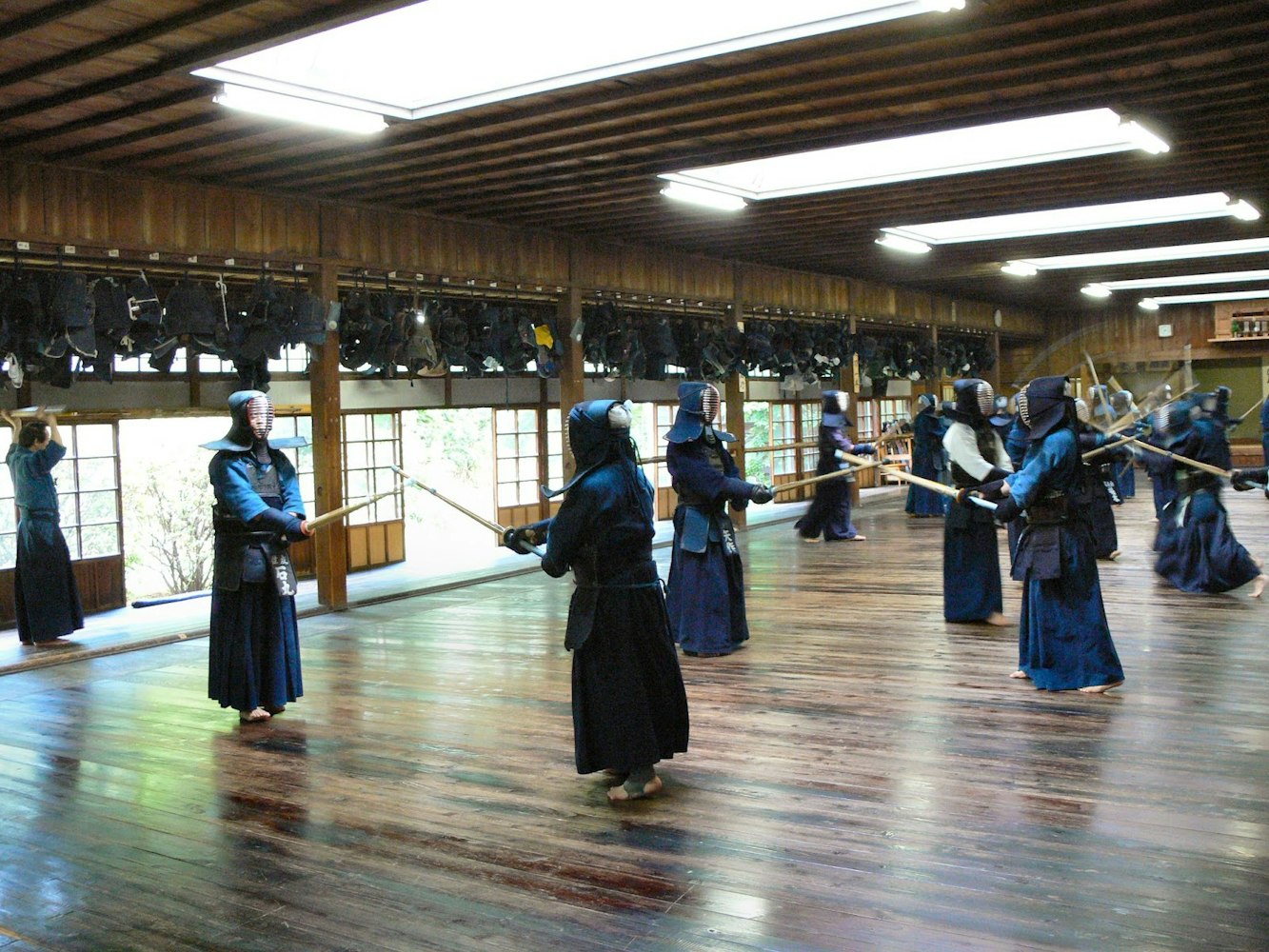
일본 이바라키 현의 작은 마을 이와마에 위치한 아이키 신사는 아이키도 수행자들의 정신적 중심지 역할을 합니다. 이 조용하고 신성한 장소는 아이키도의 창시자인 모리헤이 우에시바의 훈련 장소로 깊은 의미를 지닙니다. 아이키 신사는 조화, 혼합, 그리고 상대의 에너지를 재배치하는 것을 중심으로 한 아이키도의 철학과 원칙을 상징합니다.
이미지 출처:
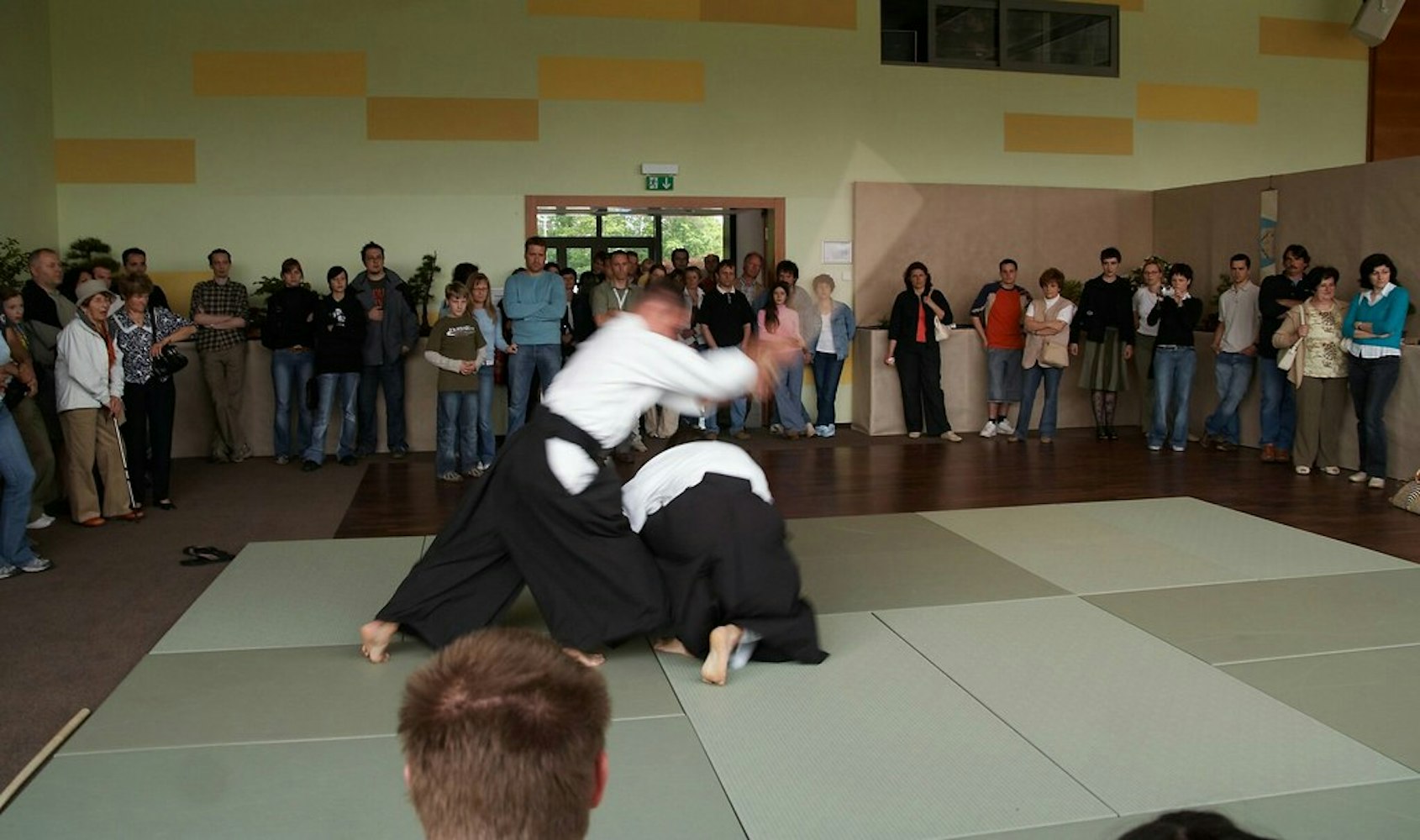
아이키 신사를 방문하는 사람들은 훈련 세션에 참여하거나, 아이키도 기술의 시연을 관람하거나, 신사 구내에 스며드는 평화로운 분위기를 경험할 수 있습니다.이 신사는 또한 우에시바의 가르침을 저장하는 곳으로서, 그의 삶과 아이키도의 발전에 관련된 유물과 문서를 전시하는 박물관이 있습니다. 아이키도의 정신적, 철학적 측면에 대한 깊은 이해를 찾는 이를 위해 아이키 신사는 깊고 몰입감 있는 경험을 제공합니다.무술이 현대 일본에 미친 영향
무술은 현대 일본의 일상 생활의 매우 중요한 부분이 되었습니다. 무술 훈련을 통해 발전된 원칙과 가치들은 훈련의 포로를 넘어 다양한 일본 사회의 측면에 스며들었습니다.
무술의 기초가 되는 훈련, 존중, 그리고 자기개선은 일본 문화에 깊게 뿌리내려 있습니다. 일본의 많은 어린이들은 어릴 때부터 무술 훈련에 노출되어 신체적인 기술뿐만 아니라 인내심과 결단력 같은 자질도 배웁니다.
Samuel Castro
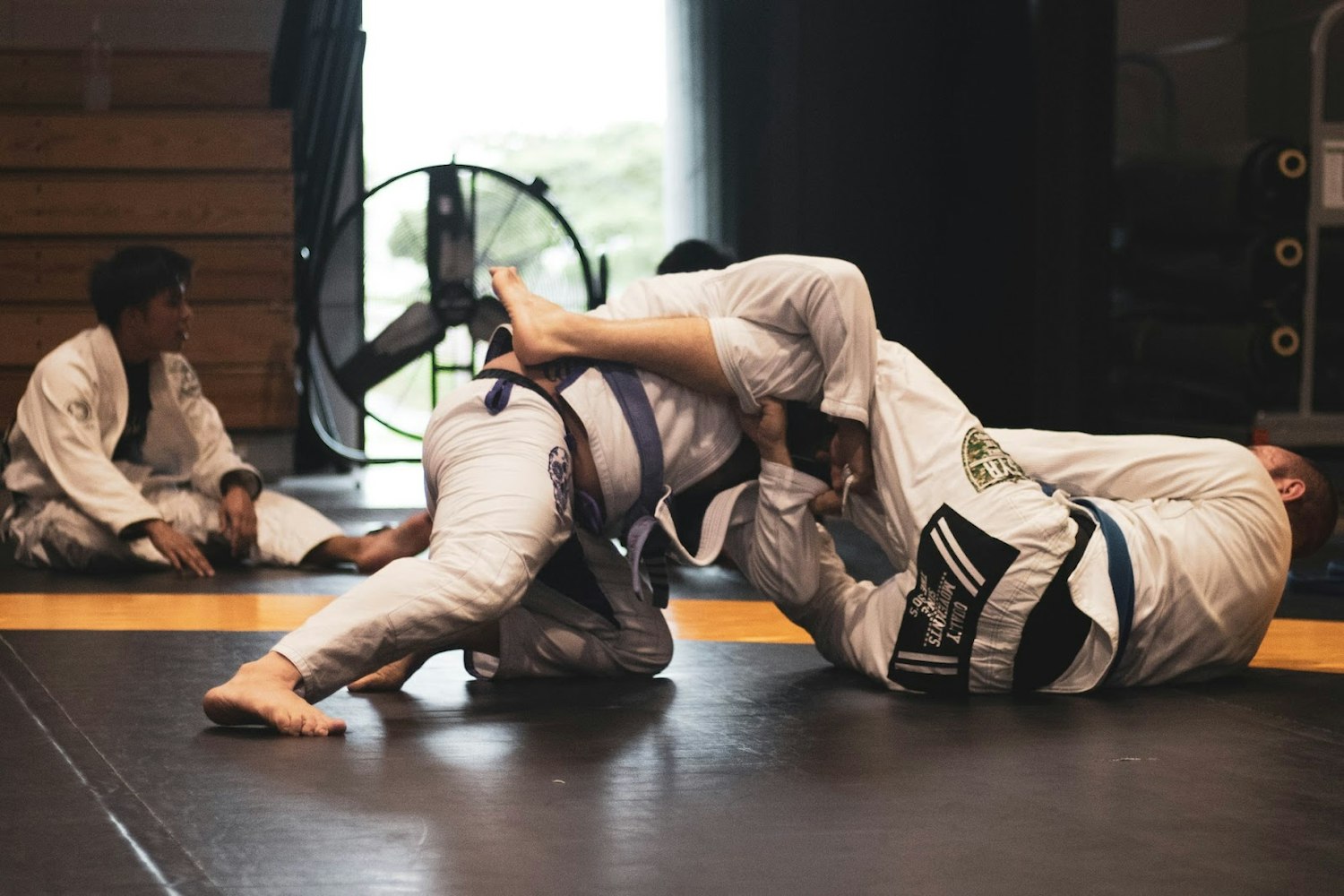
전국 곳곳에서 '도장'이라고 알려진 무술 학교가 있어, 모든 연령의 사람들이 훈련에 참여하고 무술이 제공하는 전체적인 발전의 기회를 가질 수 있습니다. 더불어, 무술은 단순한 신체 활동을 넘어서 많은 이들에게 삶의 방식이 되어, 태도, 행동, 그리고 결정 과정에 영향을 미칩니다.훈련 매트에서 배우는 가치들은 겸손, 훈련, 그리고 타인에 대한 존중으로 현대 일본 사회의 다양한 분야에서 자리 잡게 되어, 현대 일본을 정의하는 하모니와 응집력에 기여하고 있습니다.대중 문화 속에서의 전투 스타일
일본 무술은 일상 생활에만 큰 영향을 미친 것이 아니라 일본 대중 문화의 주요 요소가 되었습니다. 무술을 주제로 한 영화, 텔레비전 쇼, 애니메이션 및 만화는 전 세계 관객의 상상력을 사로잡았으며, 이러한 전투 스타일의 역동적이고 경외감 넘치는 측면을 보여줍니다.
미야모토 무사시, 켄신 히무라, 손오공과 같은 상징적인 캐릭터들은 무술의 이상을 구현하며 그들의 뛰어난 기술과 굳건한 결단력으로 팬들을 매료시켰습니다.
관광객을 위한 무술 수업 참여
일본을 방문하는 관광객에게 무술의 세계에 몰입하는 것은 독특하고 풍부한 경험입니다. 전국의 많은 무술 학교가 일본 무술의 본질을 배우고 경험하고자 하는 방문객들을 위해 특별히 디자인된 단기 과정을 제공합니다.
이 과정은 초보자부터 고급 수행자까지 다양한 수준을 아우르며, 여행자들이 경험이 풍부한 강사에게 배우고 무술의 기술, 원칙 및 철학에 대한 통찰을 얻는 기회를 제공합니다.
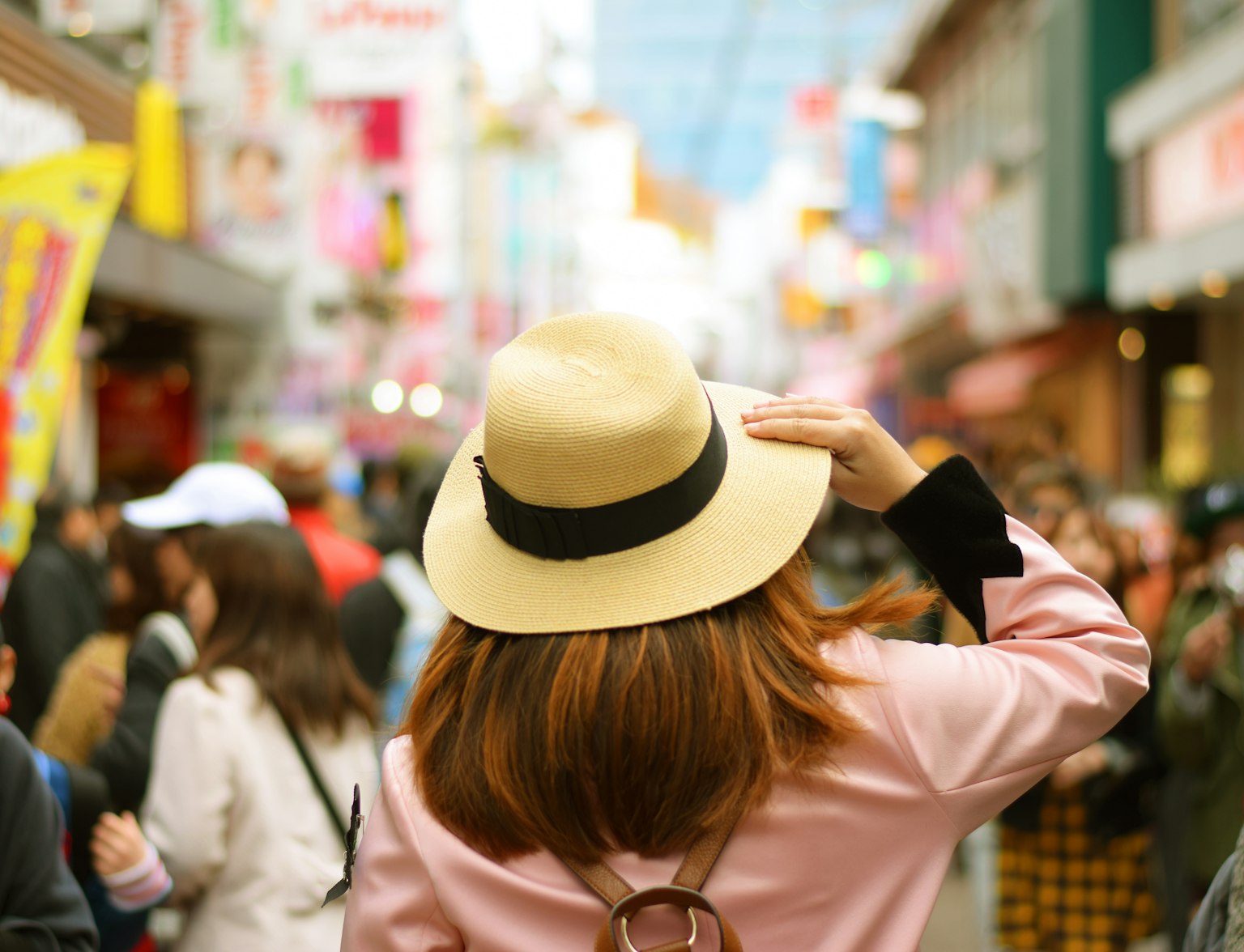
도쿄의 애니메이션과 만화 지구를 탐험하세요.
Samuel Castro
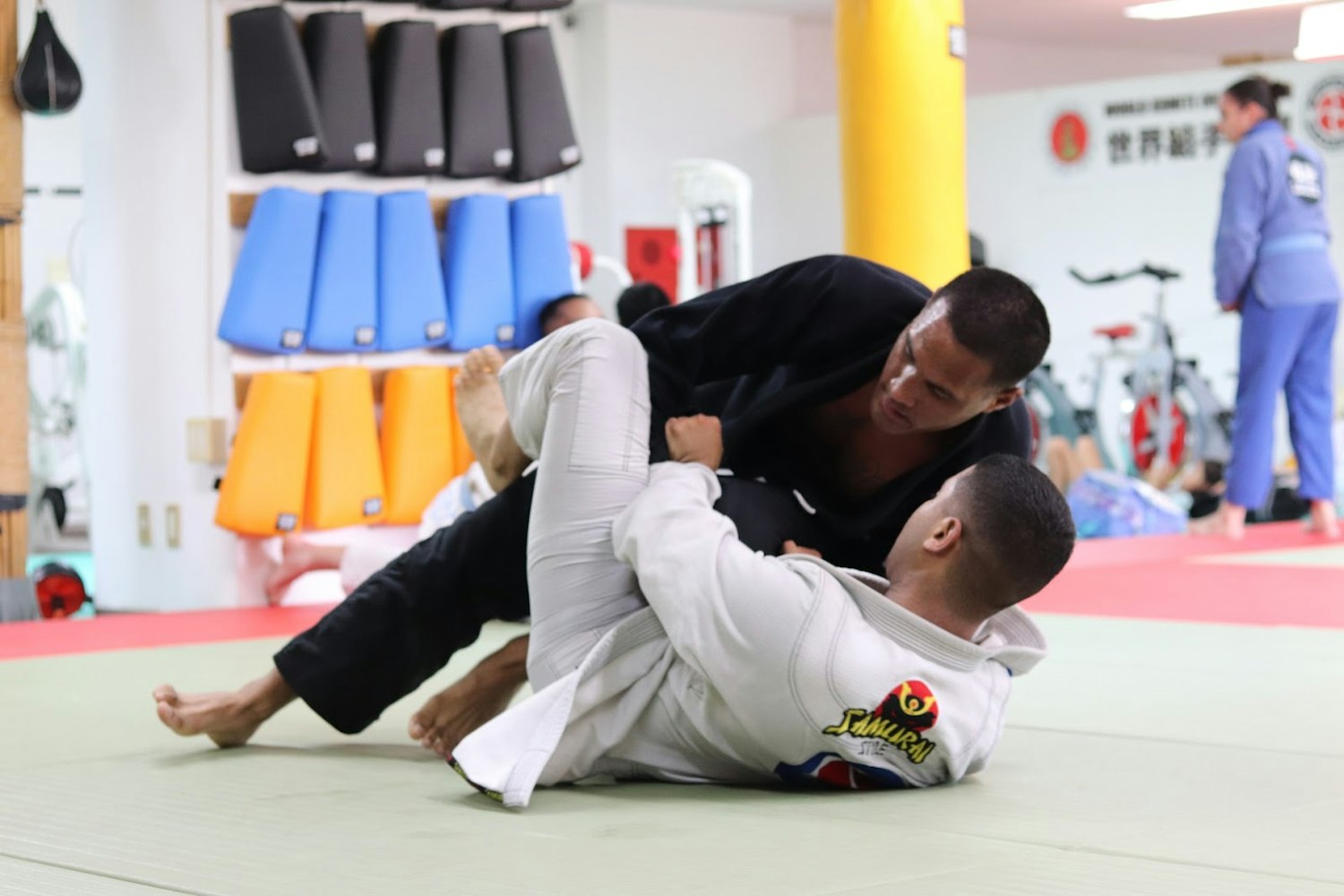
며칠 동안이든 몇 주 동안이든, 이러한 집중적인 프로그램은 응축되었지만 몰입감 있는 경험을 제공하여 참여자들이 원하는 무술에 대한 기본적인 이해를 발전시킬 수 있게 합니다. 타격 또는 그라플링의 올바른 기술을 배우는 것부터 기본적인 철학을 이해하는 것까지, 관광객들은 신체 훈련과 문화 탐험을 결합한 변화를 가득한 여정을 시작할 수 있습니다.전통적인 관습과 의식 관찰하기적극적으로 참여하는 대신 무술의 아름다움과 정밀함을 관찰하고 감상하기를 원하는 이들에게 일본은 전통적인 관습과 의식을 목격할 기회를 제공합니다.
연중 내내 다양한 시연 및 행사가 열리며, 무술의 풍부한 유산과 문화적 의미를 보여줍니다. 이러한 전시회는 종종 숙련된 수행자들이 기술을 체험하며 관객을 매료시키고 흥미로운 신체 능력을 발휘하는 모습을 담고 있습니다.
Wikimedia
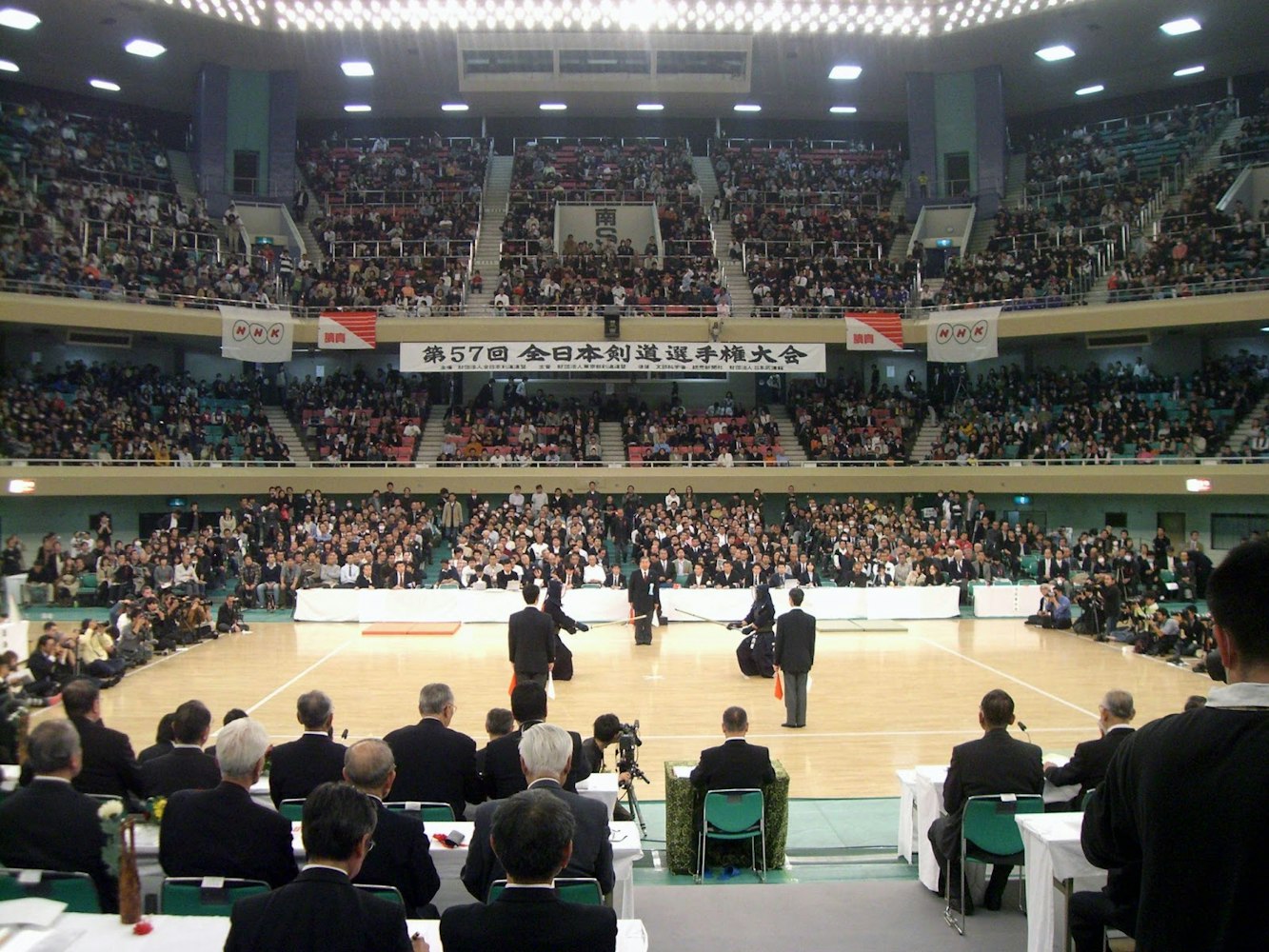
전국 대회나 신사에서의 아이키도 시범과 같은 축제 및 무술 전시회는 무술의 세계를 엿볼 수 있는 기회를 제공하며 일본 문화의 생동감 넘치는 분위기에 푹 빠질 수 있는 기회를 제공합니다.또한 일부 무술 학교나 도장은 방문객들의 문을 열어 훈련 세션을 관찰하고 엄격한 환경을 경험할 수 있는 기회를 제공합니다. 이러한 전통적인 관습과 의식을 관찰함으로써 관광객들은 일본 무술을 정의하는 예술성과 헌신에 대한 깊은 감사를 느낄 수 있습니다.결론
그래서, 받아들이세요 - 일본의 고대 무술의 매혹적인 세계를 지나가는 whirlwind 투어입니다. 검의 우아한 춤에서부터 정교한 그라플링 기술과 명상적인 궁술의 길까지, 이러한 전통은 일본 문화유산의 심장에 대한 창을 제공합니다.
정신을 마음 준비하며, 이러한 무술이 단순히 전투에 관한 것이 아니라 훈련, 존중, 그리고 자기 마스터리가 아니라는 것을 기억하세요. 그들은 현대 일본을 형성했고, 대중 문화에 스며들었으며, 이제 여러분의 탐험을 기다리고 있습니다.
So, there you have it - a whirlwind tour through the captivating world of Japan's ancient martial arts. From the graceful dance of the sword to the intricate art of grappling and the meditative path of archery, these traditions offer a window into the heart of Japan's cultural heritage.
As you ready your spirit, remember that these martial arts aren't just about combat; they're about discipline, respect, and self-mastery. They've shaped modern Japan, woven themselves into pop culture, and now they await your exploration.
So whether you're stepping onto the training mat or sitting in awe at a traditional ceremony, you're immersing yourself in a centuries-old legacy of wisdom, strength, and harmony. Let the journey begin!



